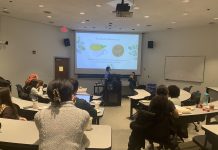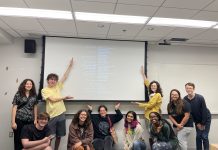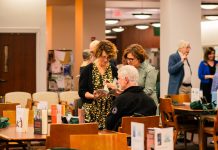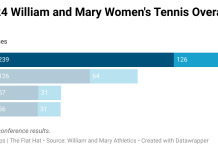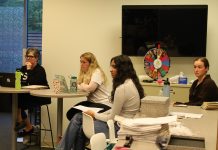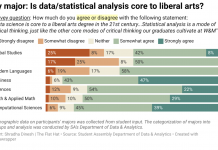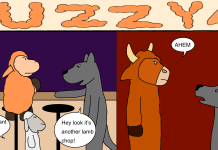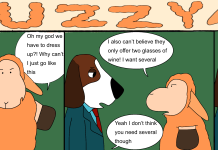Post-World War I Paris was not only a city recovering from the horrors of trench warfare but the site of a burgeoning new culture, one that embraced playfulness, creativity, and joie de vivre. The poet Robert Desnos was one of many swept up in this transformation. His pun-filled poetry, critical film and art reviews and relationships with writers such as André Breton and Louis Aragon signaled a new generation of art and literature.
It was Desnos’s role in the surrealist movement that first piqued the interest of Katharine “Kate” Conley, the new Dean of the Arts and Sciences at the College of William and Mary and biographer of Desnos.
“In the vanguard, [Desnos] was at the crossroads of everything that was happening that was new and exciting in French culture in the [1920s] and [1930s],” Conley said. “He was my entry into surrealism, which was a movement that had produced literature and art that I consider to be interesting, playful, beautiful, moving, but also integrally connected to history and politics.”
Born in Washington, D.C., Conley spent the majority of her childhood abroad, where she learned to speak French at Belgian schools. Her parents (her father was in the Foreign Service) encouraged her to major in French during her time at Harvard University. Although she had thoroughly enjoyed her French classes, Conley thought otherwise.
“I felt that I knew French already, so I didn’t want to major in it, which is sort of a silly response, but I really loved all my English literature classes,” she said. “I majored in it and I was interested in medieval studies.”
She continued to explore her interest in English by pursuing jobs in publishing and journalism. However, a chance meeting with a French professor in Boulder, Colo., convinced her to return to her bicultural roots.
“I’d had jobs I really enjoyed in publishing, that had challenged me, but inevitably after about two years I would begin to wonder what came next, and I would get restless, and so I’d switch jobs,” Conley explained. “I can safely say after 24 years in academia that I’ve always been challenged, I’ve never been bored, and my work has shifted and changed in wonderful ways. It was a really good choice for me.”
Conley’s interest in French surrealism did not arise until she enrolled in a graduate seminar on avant-garde film. She was particularly drawn to films by Man Ray, an American photographer whose 1928 film “L’Étoile de mer,” which translates to “The Sea Star,” was based on a script by Desnos. Her subsequent master’s thesis and critical biography, Robert Desnos, Surrealism, and the Marvelous in the Everyday Life, was a more in-depth exploration of her initial fascination with Desnos.
Conley’s research has since expanded to include surrealist women, who served as the subjects of her dissertation. Her first book is titled Automatic Woman: The Representation of Women in Surrealism, and her forthcoming volume is called Surrealist Ghostliness. In fact, the thesis of her latter work did not materialize until after she had completed her first chapter on Lee Miller, a female American photographer. The last word of that chapter — “ghostly” — intrigued her.
“I knew what the other chapters were going to be about, and I had a plan for what would draw them together that had to do with classification, categorization,” Conley said. “As I thought about the word ‘ghostly,’ I went for a run and was thinking ‘ghostly, ghostly,’ and that was resonating with me, and I thought, ‘Wait a minute — the chapter on Man Ray is ghostly,’ and I thought, ‘Oh, the chapter on Claude Cahun is ghostly. So is the chapter on Francesca Woodman, and so is the chapter on Susan Hiller.’ I realized that the ‘ghostly,’ which I turned into a noun ‘ghostliness,’ not ‘ghost,’ but the ‘ghostly effects,’ were present in all the works that I was studying … and present from the very beginning of the [surrealist] movement.”
Such research has given Conley the opportunity to meet with the artists about whom she has written, including the painter Dorothea Tanning and the installation artist Susan Hiller. More importantly, though, she has shared her knowledge with students, and has overseen their independent projects.
It was not until 2010 when Conley, who was then the Edward Tuck Professor of French and Comparative Literature at Dartmouth College, first worked in academic administration. As the Associate Dean of the Faculty for Arts and Sciences, she oversaw half of the academic departments, aided in the creation of the new Visual Arts Center, and changed the name of the division from “Humanities” to “Arts and Humanities.”
“It was a growth opportunity,” she said, “but I still considered myself a professor.”
Now, Conley looks forward to working at a public institution. She looks forward to working on curriculum review and plans to enhance the College’s internationalization by partnering with the Wendy and Emery Reves Center for International Studies. While she does not have time to teach, her passion for learning remains steadfast.
“We’re in education because we think learning matters, and this [is] an opportunity to learn more, another growth opportunity,” Conley said. “[I am] able to start something new and to really learn new things at my age and my career, when I hadn’t even imagined that I would get the chance.”





